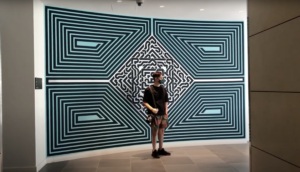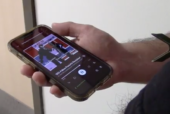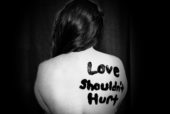Los Angeles is a city with an array of different art exhibits, museums and is home to many famous artists. But some of the most popular art in LA can be found on the streets.
Found on businesses, freeway underpasses and building walls, street art is a staple in the City of Angels. It takes different forms: from traditional graffiti, to well-known murals, even in the form of stickers or stenciling.
The Tate Museum in London explains the definition of street art is broad.
“Street art,” the museum says, “is related to graffiti art in that it is created in public locations and is usually unsanctioned, but it covers a wider range of media and is more connected with graphic design.”
Murals have had a long history in Los Angeles, dating back to the 1930’s with the historic América Tropical painted over 98 feet wide depicting Mexican-Indian and Mayan themes. With famous artists such as Banksy and Shepard Fairey giving street art renewed visibility, visiting murals and other forms of street art has become a trendy sought-after activity for locals and tourists. One of the more sought-after destination points has been murals created in memoriam for the late Kobe and Gianna Bryant and rapper Nipsey Hussle, with different versions painted on walls all over Los Angeles.

Gustavo Fuentes a Los Angeles based tape artist, also known by his tagger and Instagram name Flëkz, was born in El Salvador and came to the U.S. as a child. Fuentes says he got into street art in 8th grade and was inspired by the work of other taggers.
“It took over my life without realizing it,” he says. “I was inspired by Banksy and his amazing stencils and started creating my own stencils, and realized I could use those stencils — and make them out of tape.”
With just tape and acrylic, Fuentes uses that as his main medium and has now been doing that for over 10 years. He is known for incorporating sacred geometry into his art pieces: “There always has to completely be balance.”
DEFER, the name Alex Kizu goes by when creating street art in Los Angeles,went to Santa Monica College and later transferred into CSUN.
When asked if he would consider himself a street artist, he said, “I just like saying artist because I don’t think I’m contained specifically, I like to diversify my practice.”
DEFER started out with different graffiti crews in the pioneering days of the 1980s.“[Graffiti] was very scattered,” he said. “It isn’t like it is now where there’s a lot of graffiti everywhere, it was very new to Los Angeles at the time.”
Referencing the ‘Wild Style’ graffiti that originated from New York, DEFER remembered that this form of art had not always been popular.
“We didn’t have internet and all that stuff back then,” he said, “so it was more like you saw it in a music video or in a movie, so you only caught a glimpse of it. Now you have social media where you can just pull up stuff from anywhere … When someone went to New York and had a photo album, that was like a treasure.”
DEFER said graffiti art wasn’t always the social media trend it has been made into today.
“At the beginning it was very esoteric,” DEFER says. “Now everyone has Instagram and all these different platforms to share their artwork but back then you kind of did it and just left. You weren’t doing it for any kind of recognition from the general public, now people use street art as a segue to a career.”
Fuentes has collaborated with DEFER.
“DEFER is an incredible artist,” Fuentes said, “world-renowned, huge-inspiration, and just huge opportunity to work with him and I’m very grateful to have that piece now.”
DEFER’s art, much like Fuentes, has a specific style but is ever evolving much like the industry and history of the practice as a whole.
“Japanese art and also street art, it has kind of changed more lately. When I first started I would fuse some imagery that was like traditional Japanese — more of the animals, tigers and dragons. I used to use that as figurative characters and then have my typography and different kind of designs in the background.”
DEFER grew up in Boyle Heights, and was surrounded by many socio-political murals on the walls. East Los Streetscapers members have executed over twenty murals and large-scale public artworks.
“In the ‘80s you saw more political figures on the wall,” DEFER says. “Cesar Parra, different cultural, socio-economic messages. There was a whole movement of Chicano artist and that was very prevalent in the neighborhood I grew up in.”
In 2007, DEFER had a teacher that liked his style and asked him to be in a show in Culver City at the L.A. Contemporary Gallery.
His artistic style was also influenced by his Japanese American mother who was part of a movement that fought for reparations for the internment during World War II.
“Being around that movement,” he remembers, “I was around people that were asking we should paint something, and I have painted a couple things for them, which gave me more awareness [of] … what was going on.”
The hidden messages and historical significance in street art may not have the meanings it once started as.
DEFER says groupslike the East Los Streetscapes and other muralists and taggers, “are legends. It’s hard to say in the here and now with kids they are just Instagram and whatever is popular.”
“People don’t cherish history as much as they used to.”
This story was reported and produced by Domonique Isabeau, Jessica Harper and Cesia Lopez.

 Tweet this Video
Tweet this Video Share on Facebook
Share on Facebook Share via E-mail
Share via E-mail

